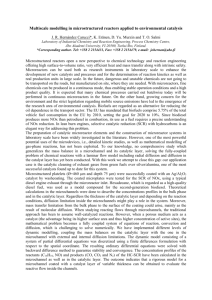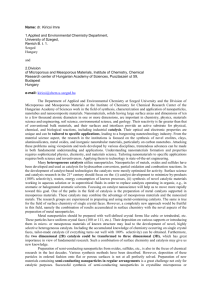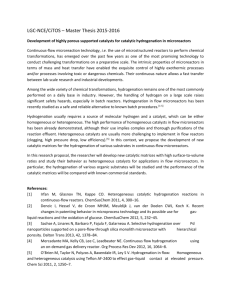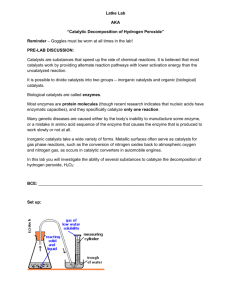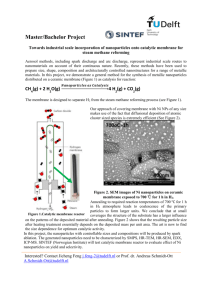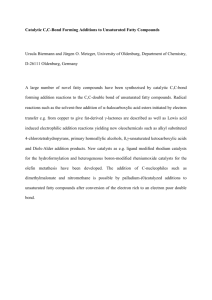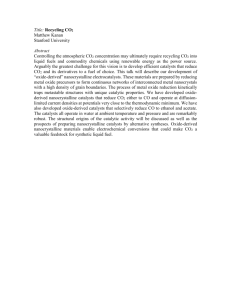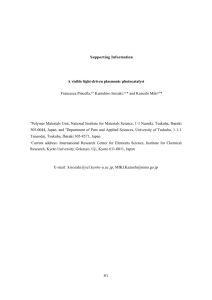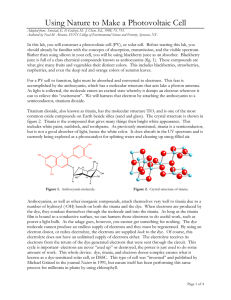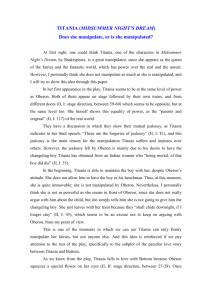precursor ev
advertisement
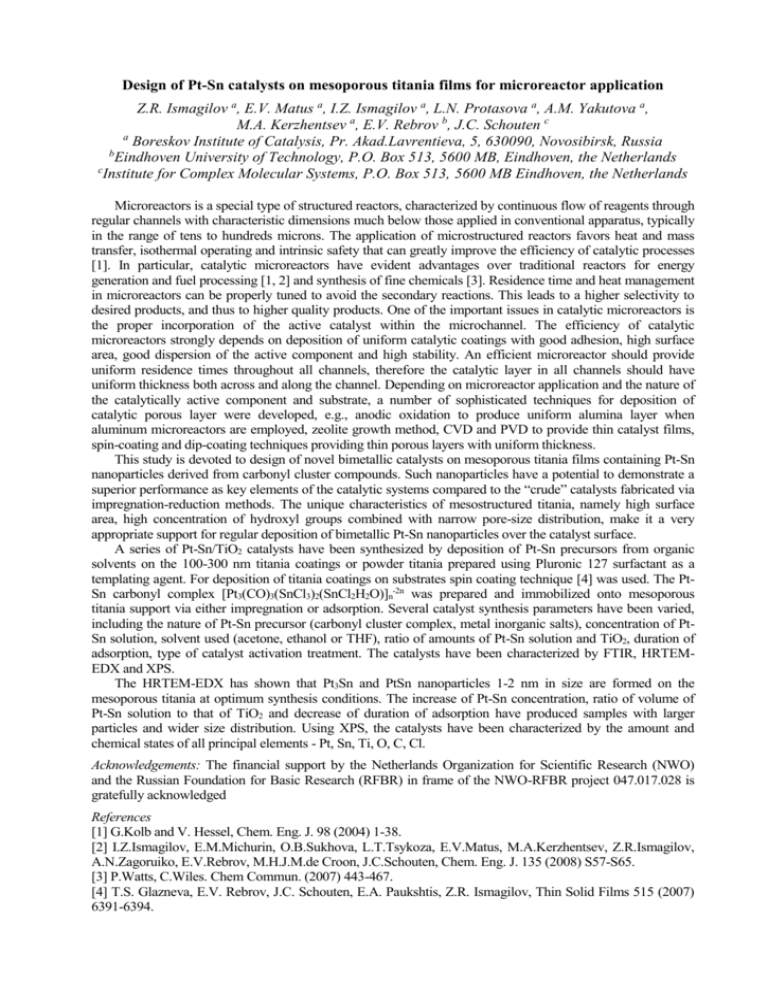
Design of Pt-Sn catalysts on mesoporous titania films for microreactor application Z.R. Ismagilov a, E.V. Matus a, I.Z. Ismagilov a, L.N. Protasova a, A.M. Yakutova a, M.A. Kerzhentsev a, E.V. Rebrov b, J.C. Schouten c a Boreskov Institute of Catalysis, Pr. Akad.Lavrentieva, 5, 630090, Novosibirsk, Russia b Eindhoven University of Technology, P.O. Box 513, 5600 MB, Eindhoven, the Netherlands c Institute for Complex Molecular Systems, P.O. Box 513, 5600 MB Eindhoven, the Netherlands Microreactors is a special type of structured reactors, characterized by continuous flow of reagents through regular channels with characteristic dimensions much below those applied in conventional apparatus, typically in the range of tens to hundreds microns. The application of microstructured reactors favors heat and mass transfer, isothermal operating and intrinsic safety that can greatly improve the efficiency of catalytic processes [1]. In particular, catalytic microreactors have evident advantages over traditional reactors for energy generation and fuel processing [1, 2] and synthesis of fine chemicals [3]. Residence time and heat management in microreactors can be properly tuned to avoid the secondary reactions. This leads to a higher selectivity to desired products, and thus to higher quality products. One of the important issues in catalytic microreactors is the proper incorporation of the active catalyst within the microchannel. The efficiency of catalytic microreactors strongly depends on deposition of uniform catalytic coatings with good adhesion, high surface area, good dispersion of the active component and high stability. An efficient microreactor should provide uniform residence times throughout all channels, therefore the catalytic layer in all channels should have uniform thickness both across and along the channel. Depending on microreactor application and the nature of the catalytically active component and substrate, a number of sophisticated techniques for deposition of catalytic porous layer were developed, e.g., anodic oxidation to produce uniform alumina layer when aluminum microreactors are employed, zeolite growth method, CVD and PVD to provide thin catalyst films, spin-coating and dip-coating techniques providing thin porous layers with uniform thickness. This study is devoted to design of novel bimetallic catalysts on mesoporous titania films containing Pt-Sn nanoparticles derived from carbonyl cluster compounds. Such nanoparticles have a potential to demonstrate a superior performance as key elements of the catalytic systems compared to the “crude” catalysts fabricated via impregnation-reduction methods. The unique characteristics of mesostructured titania, namely high surface area, high concentration of hydroxyl groups combined with narrow pore-size distribution, make it a very appropriate support for regular deposition of bimetallic Pt-Sn nanoparticles over the catalyst surface. A series of Pt-Sn/TiO2 catalysts have been synthesized by deposition of Pt-Sn precursors from organic solvents on the 100-300 nm titania coatings or powder titania prepared using Pluronic 127 surfactant as a templating agent. For deposition of titania coatings on substrates spin coating technique [4] was used. The PtSn carbonyl complex [Pt3(CO)3(SnCl3)2(SnCl2H2O)]n-2n was prepared and immobilized onto mesoporous titania support via either impregnation or adsorption. Several catalyst synthesis parameters have been varied, including the nature of Pt-Sn precursor (carbonyl cluster complex, metal inorganic salts), concentration of PtSn solution, solvent used (acetone, ethanol or THF), ratio of amounts of Pt-Sn solution and TiO2, duration of adsorption, type of catalyst activation treatment. The catalysts have been characterized by FTIR, HRTEMEDX and XPS. The HRTEM-EDX has shown that Pt3Sn and PtSn nanoparticles 1-2 nm in size are formed on the mesoporous titania at optimum synthesis conditions. The increase of Pt-Sn concentration, ratio of volume of Pt-Sn solution to that of TiO2 and decrease of duration of adsorption have produced samples with larger particles and wider size distribution. Using XPS, the catalysts have been characterized by the amount and chemical states of all principal elements - Pt, Sn, Ti, O, C, Cl. Acknowledgements: The financial support by the Netherlands Organization for Scientific Research (NWO) and the Russian Foundation for Basic Research (RFBR) in frame of the NWO-RFBR project 047.017.028 is gratefully acknowledged References [1] G.Kolb and V. Hessel, Chem. Eng. J. 98 (2004) 1-38. [2] I.Z.Ismagilov, E.M.Michurin, O.B.Sukhova, L.T.Tsykoza, E.V.Matus, M.A.Kerzhentsev, Z.R.Ismagilov, A.N.Zagoruiko, E.V.Rebrov, M.H.J.M.de Croon, J.C.Schouten, Chem. Eng. J. 135 (2008) S57-S65. [3] P.Watts, C.Wiles. Chem Commun. (2007) 443-467. [4] T.S. Glazneva, E.V. Rebrov, J.C. Schouten, E.A. Paukshtis, Z.R. Ismagilov, Thin Solid Films 515 (2007) 6391-6394.
